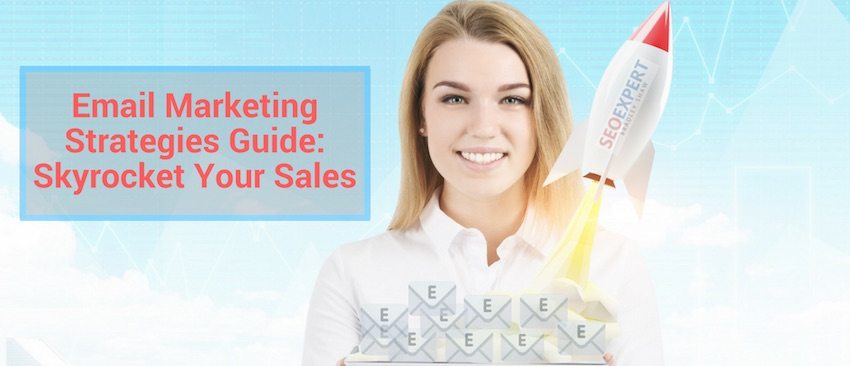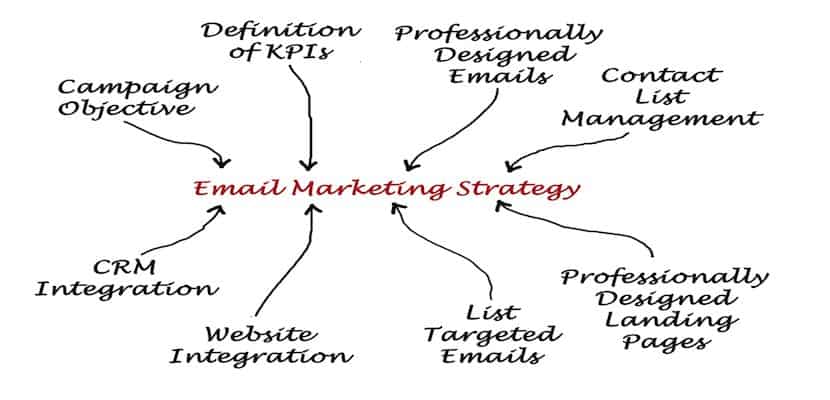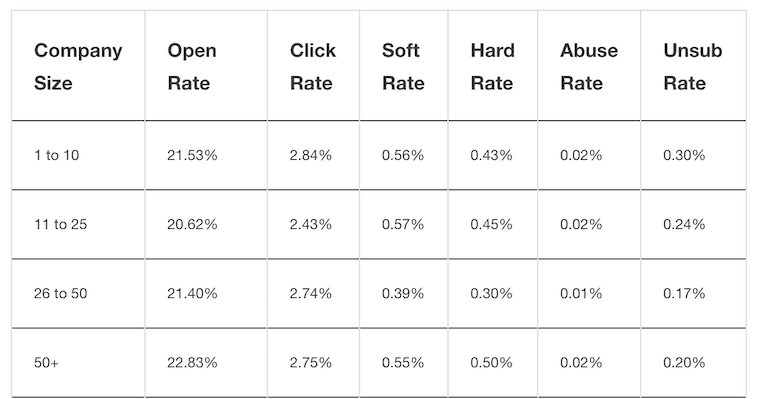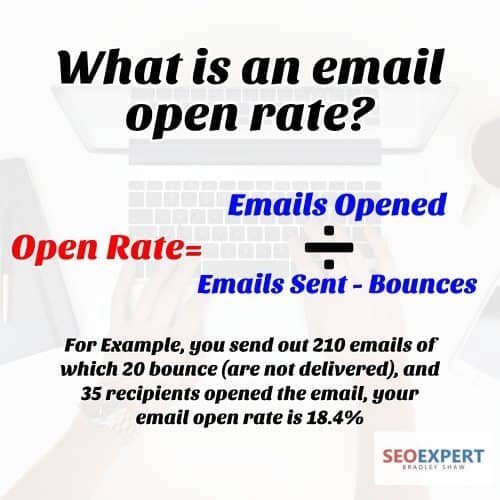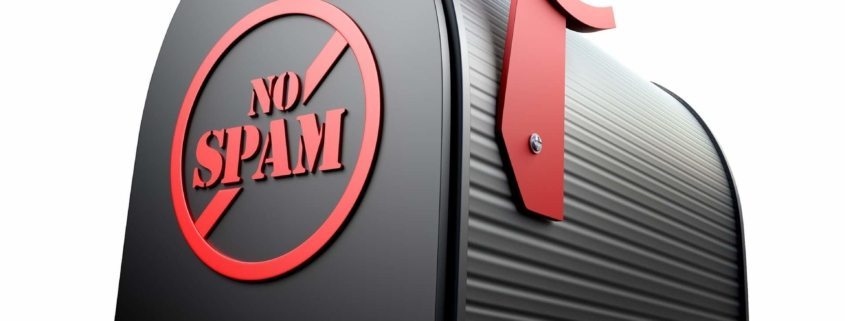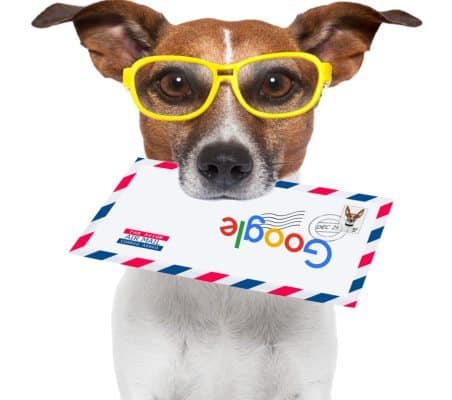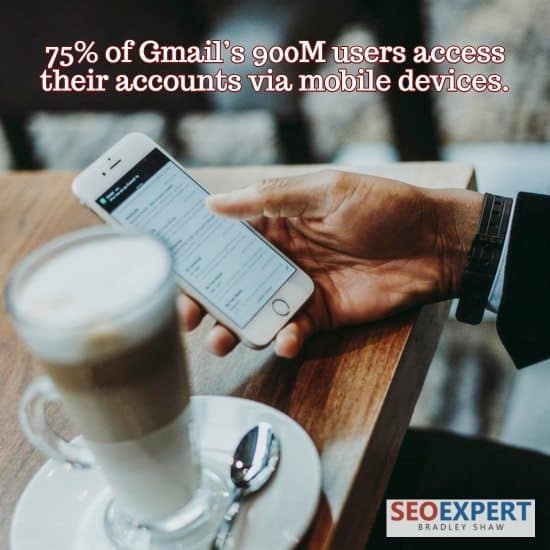The Best Email Marketing Strategies & Techniques To Grow Your Business
In 2008, it was not uncommon to hear email marketers exclaiming that email was dead.
The advent of both social media and instant messaging systems seemingly began to reduce email newsletter’s reach.
Metrics began to tank. As a result, marketers lowered their emphasis on collecting email leads.
Email marketing was struggling to survive as spamming and inbox clutter was out of control.
Instant messengers were becoming more and more capable to transmit messages.
Many online businesses gave up, or at least, stopped focusing so intently on email collections. I am here to tell you that email was not dead. It was merely a calm before a storm. Read this article for my top email marketing tips and strategies.
Effective Email Marketing Strategies For Business
Over the years, email strategy has evolved.
While it is normal for an online business to have a primary concern with email conversions, they also must pay attention to email best practices.
Failing to utilize best practices with your email business can result in reduced sales, wasted investment, and worst of all, the potential for legal ramifications.
Email has a history of being abused by scammy online businesses. Service providers such as Google and Yahoo!, as well as legal watchdogs such as Can-Spam, regulate the industry.
Failing to comply can result in your emails never being seen or opened by the subscriber, or worse more, legal recourse.
Google’s Gmail is notorious for labeling poorly executed emails as spam.
Most Gmail users will never check their spam folders seeing that Gmail is intuitively set up to display folders for promotions, updates, and personal inbox email.
Because of this, email marketing best practices and your ability to improve your conversions are often the same. For instance, have you considered what the best time to send email newsletters is?
What is the best business email marketing software?
Reaching consumers using email for business products and services can take an average Joe business and turn it into an ROI machine.
Build Your List Right From The Start
Email marketing lists come in all shapes and sizes.
Building your list using the best email marketing techniques will result in the most significant returns. Whether you are marketing to businesses or consumers, your list should be built from the ground up using quality standards.
There are a variety of ways to collect email addresses, including on social media, embed forms on websites, and hosted email collection forms.
It is essential that you disclose what the purpose of collecting the subscriber’s email is. For example, will you be emailing them daily, or weekly, or a few times a week?
Setting expectations for the subscriber can help reduce the number of email complaints and unsubscribes you get when you start mailing them. If the subscriber signs up for your newsletter and you begin emailing them twice daily, the subscriber might get irritated and react by unsubscribing.
If too many people unsubscribe from your email list, Gmail and other email service providers may penalize you.
One favorite way to build an email list is by giving away something free. For example, giving away a free downloadable eBook when the subscriber signs up. This is a proven tactic that can help create an engaging following. However, the process should not stop with the collection of the email.
One way to get your newsletter off to a great start is to have an automatic email which includes the free eBook downloadable link inside of it. The newsletter should be energetic and welcome the subscriber. If you plan to consistently offer free eBooks, let them know that as a subscriber, they can expect more free stuff.
Just sending them a link to download the eBook is a bit underwhelming.
This is a golden opportunity for your business to impress the new subscriber. Furthermore, your eBook can include more offers from your company via embedded links. You do not want your eBook to be a link farm. Offer relevant upsells and great content in any eBook you choose to send out to subscribers both new and old. Many affiliate programs, such as Amazon, will ban you for deploying their affiliate links in a PDF file, so be careful what you decide to promote inside of any eBook.
Depending on which marketing solution you decide to go with, you can customize your collection embed forms.
Remember, an email collection form is simply a call to action. You do not have to offer it as downloadable. You only need to entice the web surfer to sign up for your newsletter.
Gmail changed the game for Email Marketers
If there was anyone on earth who did not buy into the “email is dead” hype, it was Google.
Instead of sulking over the smoking ashes of Gmail’s dire straights, Google decided to solve the problem.
Google diagnosed the issue with email as an issue with the consumer’s growing disdain for their messy inboxes. Email inboxes were cluttered, leading to confusion and saturation.
With more and more offers and email correspondences being shoved into a single inbox, the email experience had begun to head downhill.
Google understood that while a person wanted to prioritize their email hierarchy, they still wanted a substantial discount on shoes and accessories.
So why not have both?
Gmail fixed this issue by creating a tabular system that intuitively divided up emails based on categories such as promotions, updates, and even social media correspondences.
Here’s an example of the Gmail browser look we’ve all become incredibly familiar with.
This not only made the personal inbox a sanctuary for the email user again, but it also opened the doors for email marketers to send subscribers newsletters again.
Suddenly, marketing email was a profitable venture once more.
The improved dynamic and logic of Gmail served to help users see personal correspondences as priority messages. It also created an environment that allowed the consumer to see more relevant offers.
Yahoo! and Hotmail followed shortly behind Gmail’s lead and revamped their services.
This turn of events breathed life back into a dying email marketing vertical.
Today, email has never been a more significant and compelling part of a potent, sophisticated sales funnel.
However, many online businesses still don’t lend enough focus to email marketing. It has to be done correctly, or it is just a waste of time.
Let’s break down the brass tacks of marketing by email and see if we can right the ship.
Breaking Down Email Metrics
Understanding your KPI contributing factors is the life-blood of running successful email campaigns. If you can’t interpret statistics, you can’t improve the ROI of your campaigns.
KPI, or metrics, are the footprints left behind every time you send an email campaign. Parameters such as email conversions, click-through rates, unsubscribes, open rates, and abuse complaints, vastly effect email marketing campaign successes and failures. These contribute both to the longevity of your email list as well as the ultimate profitability.
Let’s look at some of the email marketing statistics which fuel long-term success.
Email Open Rates – what are they and how to improve them?
The rate at which subscribers open a newsletter is typically calculated using percentages.
This should not be confused with delivery rates, which are how many emails landed in email inboxes. The email open rate calculates the percentage of subscribers who opened the newsletter of all sent emails.
If your delivery rate is low due to being blackballed in, for example, Yahoo!, this would vastly lower your email open rate percentage.
If you send a newsletter to 100 subscribers and 20 of those subscribers open the newsletter, your email open rate is 20%.
By in large, 20% is a good percentage for any business.
Automated emails, such as ones containing free eBooks, will typically have much higher open rates due to the subscriber expecting something free inside.
Update emails, such as account changes or confirmations, would also yield inflated open rate numbers. Healthy email newsletter open rates are typically around 18% to 25%, statistically. Anything higher than that range would be considered a great success.
Email open rates are not just important for your products and services; they are also pertinent to the overall general health of your subscriber list.
If your open rates are too low, the email service provider may label your email as spam and stop displaying it in the primary inboxes.
This is a natural part of the email service provider’s quality algorithm.
If subscribers do not open your emails, Gmail may assume that your emails are not relevant to the subscriber. Gmail may also label your messages as spam, hence, why nobody is opening your messages.
What is the Cause Of Poor Open Rates?
#1 Poor Newsletter Content
When a web surfer opts in for your newsletter content, they have expectations. If your newsletters fail to meet those expectations, you can expect one of a couple of different potential reactions.
- They opt out of your list
- They stop opening your emails
The second option is the worse outcome.
Many people are too lazy to opt out of emails, and because modern email inboxes deal intelligently with the flood of incoming newsletters, many subscribers will merely just stop opening the emails.
Every business is different. If your business is selling a product, you can probably get away with sending offers frequently — for example, discounts of the day.
People probably signed up for your shoe site’s newsletter hoping to get exclusive deals. The battle here will be consistently marketing deals that appeal to your subscribers. If your deals run stale, your subscribers will get used to those deals, and whenever they see your offers arrive in their inbox, they will ignore them.
Subject lines matter, of course (more on those below), but if a subscriber has opened your last ten newsletters and they have felt uninspired by them, they may start to associate all newsletters derived from your brand as uninteresting.
If people opted into your newsletter to learn more about a specific subject, you might have to throttle the number of offers you send.
If you have a tornado safety website where people can opt-in to learn more about tornado safety, recent tornadoes, and tornado preparation tips, they expect to get this content sent to them for free.
Maybe your ultimate goal is to sell tornado shelters and power generators to your subscriber list. That is all well and good.
However, if you set up your campaign to appeal to people looking for tornado safety tips because you wanted to increase your subscriber opt-in conversions, you are going to need to include this relevant content.
You will need to pick and choose when and where you market your tornado shelters and generators.
You have a couple of options:
#2 Advertising through email newsletters
You can place ads inside of all of your newsletters for your tornado shelters and generators.
Seeing ads that are relevant to the free content you are offering, you are not likely to turn people off from your newsletter campaigns.
This is a popular way that small businesses turn a profit from big email lists.
#3 Individual email swipes
Email swipes are typically prewritten email newsletters.
Often, affiliate programs create email swipes as a way to entice email marketers to promote their offers. The email swipe is usually one email centered around one product. If you are trying to sell tornado shelters, this would mean the entire email was a sale’s pitch.
So long as you frequently send the content the user expects such as tornado safety tips, you can undoubtedly pepper in some full-on offers.
Your free content is priming the subscriber for the inevitable offer.
You have sent five emails this week on ways a person can cheaply and easily improve the safety of their home for a potential tornado; now you send an email that offers them an expensive tornado shelter. You hope that you sell a lot through one newsletter to make up for all the efforts put into the free campaigns.
You can also do both. The key is watching your metrics and making sure your open rates do not go down over time.
#4 Poor Subject Lines
Impressing today’s internet users is only a tiny window of opportunity. I have mainly found this key when I pitch media or PR outlets.
They live in a world where smartphone technology has maxed out their attention spans, leaving email marketers with the very crucial task of creating stand-out email subject lines that don’t get scrolled by.
Your email subject lines could make use of emojis. They might be a bit shorter and more front-loaded with the content’s hook (people scroll down, but still read left to right. Inserting exciting terms in the front can help spark someone’s curiosity enough to prompt a click from them.
Sucky email subject lines are ones that are too wordy, lack precision, and offer no enthusiasm. Sucky subject lines do not represent the content of the newsletter.
Writing subject lines is a tough task, but one you must take the time to refine or else your email campaigns will suffer.
One of the worst subject line mistakes I see happening with online businesses is the use of generic newsletter subject lines.
If you are a famous health icon, for example, you can get away with “Wednesday’s Health Tips Newsletter” as a subject line. For the most part, however, those type of subject lines are merely too ordinary and unengaging to result in a subscriber opening the email.
You need to lure the subscriber into your email’s content by being more specific.
For example, “How Broccoli can change your life in more ways than you think…”
So long as the content of your email includes material on broccoli, this email subject line works much better.
The reason for this is because email inboxes are incredibly competitive.
You need to hook the subscriber with catchy subjects which accurately reflect your content.
If you collected names when you built your email list, you could place the subscriber’s name in the subject line.
This is easily accomplished with services such as MailChimp and Aweber using simple code.
Here’s an example of what that might look like.
“James, we miss you and have an offer you cannot refuse.”
Using urgency in email subject to increase open rates has been a proven winner for years. When you create a subject line which asserts that a benefit may expire soon, you can often entice the subscriber to open your email.
Here’s an example:
“Nordstrom’s flash sale expires in one hour, don’t miss out!”
Another potential improvement that can be made while crafting a subject line is to front-load the action words.
With a front-loading technique, the most critical and action-oriented words are placed in the subject line’s beginning, rather than the end.
Look at my two examples below.
The first is an example of a backloaded subject line; the second version is the redone front-loaded version.
“Today Only Nordstrom’s has 30% off entire store!”
“30% Off entire store for the rest of the day!”
The only thing that matters is the 30% discount, so shifting it to the front brings that into primary view.
Remember, people read left to right.
Using clickbait subject line methods will only last so long.
Subscribers will quickly unsubscribe and potentially report your newsletter as spam.
Be fun with your subject lines and experiment, but most importantly, be accurate and honest.
What Are Email Conversions And How Are They Calculated?
An email conversion essentially defines a subscriber that has resulted in a sale, or some other predefined goal of your newsletter. Typically, conversion goals are rooted in sales of products, but they can be rooted in any action taken by the web surfer.
Most online businesses are in business with an ultimate goal of making money; hence, actions which convert web surfers into revenue are typically the most critical email conversions to focus on.
We define an email conversion using simple math. We use the total amount of subscribers who began a specific action, and then we divide that by the total of delivered emails.
Obviously, we do not want to use the total amount of emails sent. That would include emails that were potentially not delivered for various reasons. Therefore, unnecessarily lowering our email conversion rate.
An email conversion rate would be unique depending on several factors:
- Age of the email list
- Products or services being sold
- How frequent the list is mailed
- How aggressive the list is sent (think spam)
- How the subscribers were collected
Email conversions are an essential metric which serves to justify the cost of email marketing as a whole. There are costs associated with running email campaigns, so you want to increase conversions as much as possible.
If conversions are low and unsustainable, online businesses may get more aggressive with sales and offers as a way to compensate.
How to improve conversions
Start by collecting subscribers appropriately
The size of your list is less influential to ROI than the interests and engagement of the accumulated subscribers.
As mentioned before in our “build your list right from the start” section, email conversion success begins and ends with how you collect your subscribers.
Be relevant
Don’t merely “throw crap at the wall” because you have many subscribers.
You need to send offers that interest your subscribers if you want any chance of them converting into a sale.
You want to send out offers that your subscribers genuinely care about, have a passion for, and most importantly, need.
Ask yourself, what problem can you solve for your subscriber list today? That is a great start to improving conversions.
Create Mobile Optimized Newsletters
If you fail to optimize your newsletters for smartphones, you might as well hang up your cleats and retire.
Here are some quick points for mobile marketing strategies:
- Front load subject lines (we discussed this above in our subject line section)
- Shorten subject lines (this only applies if you cannot find a way to front-load)
- Break up the content with bullet points or headers
- Go single column; if you align left or right, the smartphone app will choose to place that aligned content above or below.
- Make links visible (use bold, or colors)
- Smaller images, fewer images. Don’t short-circuit someone’s iPhone with 30 images, additionally, optimize those images, so they are not so big that the subscriber has to scroll for miles to get beyond them.
Use trigger email automation
Trigger emails, or automated emails, occur when a subscriber takes an action that triggers a relevant response.
For example, if a subscriber adds a hair dryer to their cart on your website but never completes the purchase, a trigger can send an automated email asking them if they would like to check out.
The email could remind them that they have a hair dryer in their cart, or, the trigger email could offer the hair dryer at a discount to further entice the purchase.
Trigger emails are incredibly useful.
Crush It With Calls To Action
All things being equal, your list is quality, your newsletter is mobile optimized, and you are sending relevant content, it will all come down to crushing it with calls to action.
You need to sell the subscriber in seconds, using brief action-oriented words. “Buy now before the offer expires” is one of the most popular calls to action you will see in all of marketing. A call to action entices the subscriber to click on an offer inside your email, or somewhere down the marketing funnel. If your call to action is inadequate, fewer people click on the offer, which means fewer people convert to a sale.
Email conversions are the most significant indicator of revenue. Refining them through A/B split testing is essential.
What are click-through rates?
Email click-through rates are a driving factor for email conversion rates. If no one is clicking on your content and offers, you are losing the war. Your newsletters may achieve amazing open-rates. However, if no one clicks on the material, it is all for nill.
We calculate click-through rate in much the same way we achieve other various emails metric statistical outputs. Take the number of clicks on a predetermined link and divide it by the overall delivered emails.
If people consistently open your emails but never click on the links, Gmail may sense that you are sending out undesirable content.
Remember, Gmail is looking for high engagement from your newsletters. The open rate is definitely the largest metric influence for Gmail’s algorithm, but you should work on click-through rate success even if just to improve your ROI.
Poor click-through rates are endemic to deeper rooted issues.
What’s a reasonable email click-through rate?
Stats such as click-through rates are incredibly subjective and profoundly influenced by the vertical.
The typical bar is set to at least 6%.
Depending on your offers, your subscribers, and your goals, you could see a lower number and still be successful.
For example, let’s say you manufacture $5,000 tornado shelters.
You send out a weekly offer to your subscribers and get a 1% click-through rate that leads to 1 sale per week; you’re doing pretty darn good in terms of ROI.
Constant Contact, one of the biggest and most trusted email service providers, publishes an annual click-through rate average list based on verticals.
You can likely find your vertical in comparison to businesses like yours.
How to Improve Click-Through rates (CTR)
Convey Urgency

When subscribers sense that a deal is going to expire, they may be more willing to act on the offer. Using symbols such as ticking clocks can help illustrate a sense of urgency.
Killer Calls To Action
Wait, this again?
Yep, as always, most conversions of any sort are driven by strong calls to action. If your links have weak calls to action, it is less likely that anyone will click on them.
Offer Increased Click Opportunity
This might sound incredibly simple (that’s because it is), but increasing the amount of link click opportunities could drastically improve your email click-through rates. For example, are you using an image inside your newsletter?
If so, consider linking it to your offer.
You might consider having a call to action link at the beginning of the newsletter as well as the end. While you certainly don’t want your newsletter to appear like a link farm, more links do increase the odds of a subscriber clicking.
Have a Goal
If your newsletters aren’t goal-oriented, you can rest-assured your click-through rates will suck. Define the goal of your newsletters and make the relevant adjustments.
Remove Non-Essential Elements
Make sure your newsletters are streamlined for conversions and clicks by cleaning up any clutter.
If you have unneeded formatting or images, remove it. You don’t need to flood your subscribers with pictures. Particularly if all those images do is push down your essential links. Don’t hide the good stuff with fancy decor.
Click-through rates are the ultimate diagnosis of email marketing ROI success or failure. If no one is clicking, certainly it stands to reason that no one is buying.
Calls to Action or (CTA) – Best Strategies
Calls to action are text links, subjects, buttons, and images which direct a subscriber to a purchase option, or a next step that is part of a funnel that leads towards a purchase option.
Often, calls to action are entirely left out of email newsletter strategy.
When creating a call to action, it is important to be concise and direct.
For example, “Download Free eBook Now” is a call to action.
It may also be the first step in a sales funnel if the downloadable eBook has links to products for sale. If you just have, “ebooks are here,” you are likely to see fewer clicks and less overall engagement. Why?
You didn’t ask them to do anything. You didn’t tell them what they need to do.
“Redeem One Time Special Before It Expires – CLICK HERE” is another example of a pure call to action. You’ve told the subscriber what they need to do.
Improving your email call to action strategy is a multi-layered event.
Here are some tips.
- Be brief. Calls to action are rarely novels.
- Consider front-loading action words. People read left to right, so it stands to reason that action-oriented words being far left would elicit a bit more activity from a reader.
- Your newsletter needs a goal. So long as it has a purpose, the calls to action are fluid extensions to that goal.
- Make use of images and buttons. Buttons, such as ones which read “buy now,” can stand out and encourage a user to finalize what they already want – your product or your service.
- Test, test, test. Don’t fear trying new things. So long as you test your call to actions, you’ll be a step closer to your goal. A/B testing your call to action, text, buttons, and images, is smart business.
A refined, thoroughly tested, call to action, can make or break an email marketing campaign.
Don’t Wear Out Your Emails, Signs to Look For
If you over-email your subscriber list, you risk wearing them down to the point that they barely notice your latest newsletter inside their inboxes.
There is no perfect algorithm to prevent over-exposure, like any marketing dilemma, having your pulse on the metrics as well as being open to testing frequency will be your friend.
No two sites are the same.
If you are a trending news business, you can likely get away with emailing your subscribers everytime news breaks. If you are a bakery, you might lower your send-frequency and pay close attention to what you are offering. In other words, make sure you are sending them fun, energetic, discount-oriented bakery deals.
How frequent you send them may matter less than what you send them.
Here are some tips to help you improve your CTA’s.
- Base your email send-frequency on special offers. If you have a daily special offer, you can potentially get away with a daily deal.
- New subscribers tend to conceal many over-saturation issues. If your list consistently grows, you can potentially overlook saturation issues.
- Avoid canned subject lines. For example, if you are a fitness site, avoid “Today’s fitness tip” style newsletter subject lines. Instead, focus on one of the tips as the subject line hook. Canned subject lines often get overlooked as subscribers tend to get used to them.
- Purge the fat from your list. If a subscriber has not opened your newsletters in the past two years, they need to be purged. Don’t make the fatal mistake of measuring success by total subscribers; you want to measure success based on the quality of subscribers. Sometimes a weak call to action is just the result of a poor quality list.
Calls to action are of ultimate importance. Make sure you are testing and creating and never taking them for granted.
Mobile Email Marketing Strategy Matters
In 2018, most subscribers are checking their email from their smartphone.
If your emails do not look sharp on an iPhone, you might as well give up the game.
One email stats report from Litmus showed that almost a billion and a half of all emails are viewed on smartphones.
Most smartphones build Gmail, Yahoo! and Hotmail into their device infrastructures.
If you use services such as MailChimp, perform a mobile test on all of your campaigns. Make sure to include your automated emails such as confirmation emails and built-in automatic offers.
Just viewing on a desktop will not give you any idea regarding mobile presentation, readability, and more.
Mobile email applications tend to stack content. If the email is built for desktop, you might not be able to control the stacking of the content.
There is nothing like having your least valuable, bottom-filler offer as your lead, which likely doesn’t match your subject line.
Make sure your email mobile template is sleek, appealing, and easy to read. The content is always king. Make sure that your audience will have no issue reading it.
I’ve seen many cases where email text appeared fine on desktop but was overly large or small on an iPhone. If a user opens your newsletter only to find text that implies they have the vision of a 90-year-old, they are almost guaranteed to back out of it and scroll for another newsletter.
Speaking from experience, here’s how it all goes wrong. You strategically design a fantastic newsletter.
You have your free newsletter content perfectly aligned-left with calls to action which serve to funnel consumers into your paid products and services. Your newsletter’s header image looks professional. You have useful CTA driven buttons surrounded by carefully worded text. The test emails seem great.
So you send the mailer, but, you forget to check what that mailer will end up looking like on an iPhone.
So what’s the result?
Catastrophic failure.
The iPhone will essentially stack your newsletter’s content so that it corresponds appropriately with the iPhone’s dimensions. This can result in images being out of the order you initially desired.
If you created a table with three horizontal table properties, the smartphone will choose one of those and place it first and stack the rest behind it.
If your calls to action are out of order, your newsletter will appear nonsensical and unprofessional.
This is why you see more and more simple newsletters.
Newsletters that work best on both desktop and mobile devices are vertically aligned designs.
This allows the creator to put newsletter items in their desired order so that mobile devices do not append them.
Are your emails targeting millennials?
Email marketing almost died because the youth was not into it.
That is changed now that email can deliver what millennials are interested in directly into their inboxes and seamlessly into their smartphones.
How much are millennials using email?
It turns out, a whole heck of a lot.
A 2018 study showed that 51% of millennials prefer having brands email them offers. Millennials proved themselves to be the most likely demographic for email usage.
When you consider that millennials could technically have been born in the 80s, 90s, and even 2000s, that is a lot of people.
Millennials are obsessed with email. Their inbox is where they are most likely to be sold on offers and promotions.
So what type of promotions and content do they love?
- Free shipping. The revolution that is Amazon has come with the expectation of free shipping deals. If you can market your product to ship free, you might achieve an edge over your competition.
- Massive deals. For example, rather than putting just one aftershave on discount, place the entire rack on sale.
- Discount codes make people feel special. Enabling them on your shopping site is a great hook. You can include the discount code in the promotional newsletter.
- Physical coupons still work. Millennials are tech savvy and will most definitely search their email inboxes for archived coupon offers while in a store.
Making sure your email marketing campaigns are millennial-friendly is simply smart business.
Emojis – Kill em’ With Cuteness

The English language has been challenged and rivaled with the onset of various emoji uses.
Young, old, millennial, or even probably your dog, use emojis.
Emojis are a quick and simple way for people to communicate feelings and pleasantries.
So why not try them out in your email marketing campaigns?
Services such as Aweber and MailChimp allow you to quickly place emojis in your subject lines. Your email will stand out and communicate feelings or emotions without wasting precious subject line space.
It is best to give thought as to which emojis to use.
You would not want to fail and misuse one. Many people are easily offended and using the wrong emoji to communicate a message to them might turn your fantastic brand into a flaming dumpster fire.
One warning I would like to add is that getting carried away with using emojis in the subject line could cause your efforts to appear spammy, so proceed with caution.
Privacy, Close The Blinds

We live in a generation that’s exceptionally concerned with privacy.
It seems like almost nightly, the news is discussing data breaches and security risks that affect ordinary Internet civilians like you and me.
Emails are often used to send and receive account and login names. Add on that many people fill in their first and last name when they subscribe to an email list and you have a recipe for disaster.
Subscribers need to know that you are not going to be selling off their data and personal information. You need to state your intention NOT to sell that information early in the sales funnel.
Trust with a subscriber is a big stepping stone to future sales.
The solution is to add a privacy disclosure to your newsletter’s footer.
Email Marketers With a Strategy Are Thriving, Are You?
Emails are as profitable as ever, but it is also as competitive as ever.
If you are not deploying the best practices and strategies, you are likely leaving money on the table.
Email metrics and KPI are the fuel for ROI driven email campaigns. Know your metrics. Learn to test subject lines and calls to action.
As always, mobile is king when it comes to email marketing strategy, so don’t sleep on sending test mailers to iPhone and Android devices.
With a few simple changes, you can overhaul your entire email strategy plan and improve your bottom line.

